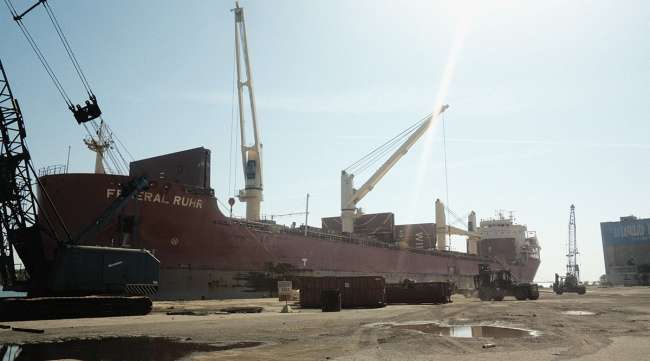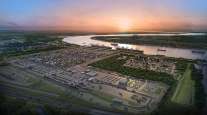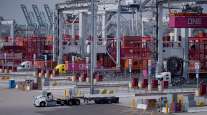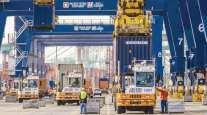The Detroit News
Detroit/Wayne County Port Authority Eyes Reduced Emissions

[Stay on top of transportation news: Get TTNews in your inbox.]
The Detroit/Wayne County Port Authority is vowing to reduce the amount of carbon dioxide it releases as part of its operations and improve the authority’s environmental impact.
The project aims for the port to reach net zero carbon emissions by 2040 and have a roadmap to track progress and ensure the success of the initiative, port officials said in a April 30 press release.
The project, officials said, will be undertaken in partnership with Tunley Engineering, an industry leader in net zero carbon reduction. The port hopes to reduce emissions through a range of initiatives, including using more renewable energy sources, the electrification of port equipment and using cleaner fuels, according to a news release.
Detroit/Wayne County Port Authority Executive Director Mark Schrupp said a portion of the agency’s terminals have already taken steps to reduce greenhouse gas emissions.
“We will show our dedication to the health and well-being of locals, employees, and visitors to the Port of Detroit by developing a plan for the decarbonization of maritime operations, as well as the reduction in particulate matter and other pollutants, at all maritime terminals operating along the Detroit and Rouge Rivers,” Schrupp said in a statement.
Schrupp said he hopes the port’s collaboration with Southwest Detroit Environmental Vision, Tunley Engineering and others will make the port a sustainable “Green Port.”
The port’s initiative comes as other companies have taken steps to reduce their greenhouse gas emissions.

This special "Inside The List" episode features the Transport Topics 2023 Top 100 largest logistics companies. Hear the program above and at RoadSigns.TTNews.com.
DTE Energy and Consumers Energy, Michigan’s largest utilities, have each promised to reach carbon neutrality by 2050. They are taking interim steps to reduce carbon emissions by retiring coal-fired burning plants and replacing them with natural gas-burning facilities as well as bringing online more wind energy centers.
Detroit residents are already exposed to elevated levels of air pollutants that help exacerbate health conditions such as asthma and cardiovascular disease, the port authority said. It hopes the project will enhance the quality of life by creating cleaner air and a healthier environment, port officials said.
A 2021 report released by the Michigan Department of Health and Human Services showed asthma rates in Detroit adults were 46% higher than in Michigan, up from 29% in 2016. The asthma rate for Detroit children was 14.6% compared with statewide rate at 8.4%.
In 2019, the rate of asthma hospitalizations for Black residents in Detroit, according to the Health Department, was more than three times the rate for white residents.

A worker moves bar-in-coil steel from a ship in the dockyard at the Port of Detroit. (Matthew Hatcher/Bloomberg News)
Raquel Garcia, executive director of Southwest Detroit Environmental Vision, said her group will focus on the routes and traffic of trucks, and will include ships that move goods up and down the river, as emissions and pollution affect residents who live near the river’s banks.
“This decarbonization plan will give us an assessment of where we are and a strong map to get to cleaner air in Detroit,” Garcia said. “Not only does decarbonization improve the health of residents, but can save these companies money and we are out to have those conversations with them.”
Garcia said an event planned for May 11 will allow residents to give them feedback on air quality and the truck traffic along the river.
“Our team will be creating a roadmap to net zero greenhouse gas emissions for the Port of Detroit, as well as improving local air quality,” said Robert Moorcroft, carbon reduction scientist and project lead for Tunley Engineering.
“This project shows how Detroit is looking to the future, can showcase low carbon technologies and be an example to other port cities,” he said.
Want more news? Listen to today's daily briefing below or go here for more info:
Distributed by Tribune Content Agency, LLC




